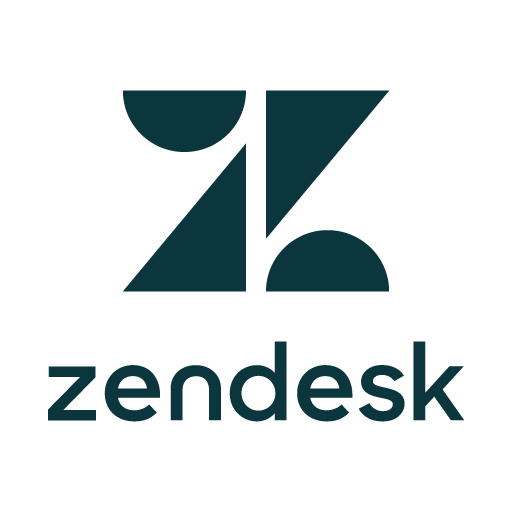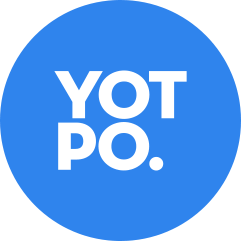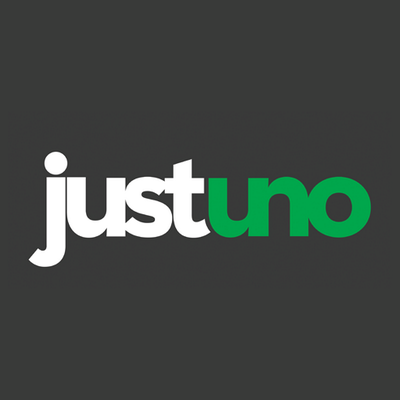
Raising 13x Their Original Kickstarter Goal With a Viral 3D Printer
Hello! Who are you and what are you working on?
Hi! My name is Braydon Moreno, I am a Co-Founder of Robo 3D.
Five years ago, we designed our own 3D printer on a dining room table of our apartment, launched a kickstarter which raised $650,000, and now have three different machines, and an ecosystem around 3D printing that we have sold to over 4,505 cities across 101 countries around the world. Our mission is to inspire the passion within people...to bring out people’s creativity with 3D printing technology.
Our inspiration to start this business spawned from my business partner designing a prosthetic leg using 3D printing. It was not only an immense cost saving, but it also had the ability to be fully customized.
We knew this tech was going to change the world. I also, simultaneously, had a mentor at the time who was speaking to me about the gold rush. He said, the people who were successful in the gold rush weren’t the people seeking gold, they were the people selling the tools to seek gold. I knew 3D printing was a tool that I could help people bring ideas to life with.
Today, with customers all over the world, we are being empowered on a daily basis by their individual stories - a firefighter designing things to improve his department, a 5th grade teacher implementing design thinking in the classroom, a father who uses his printer to teach his blind daughter about the world… The list goes on and on and we couldn’t be more proud of the community of users we have built up in such a short amount of time.
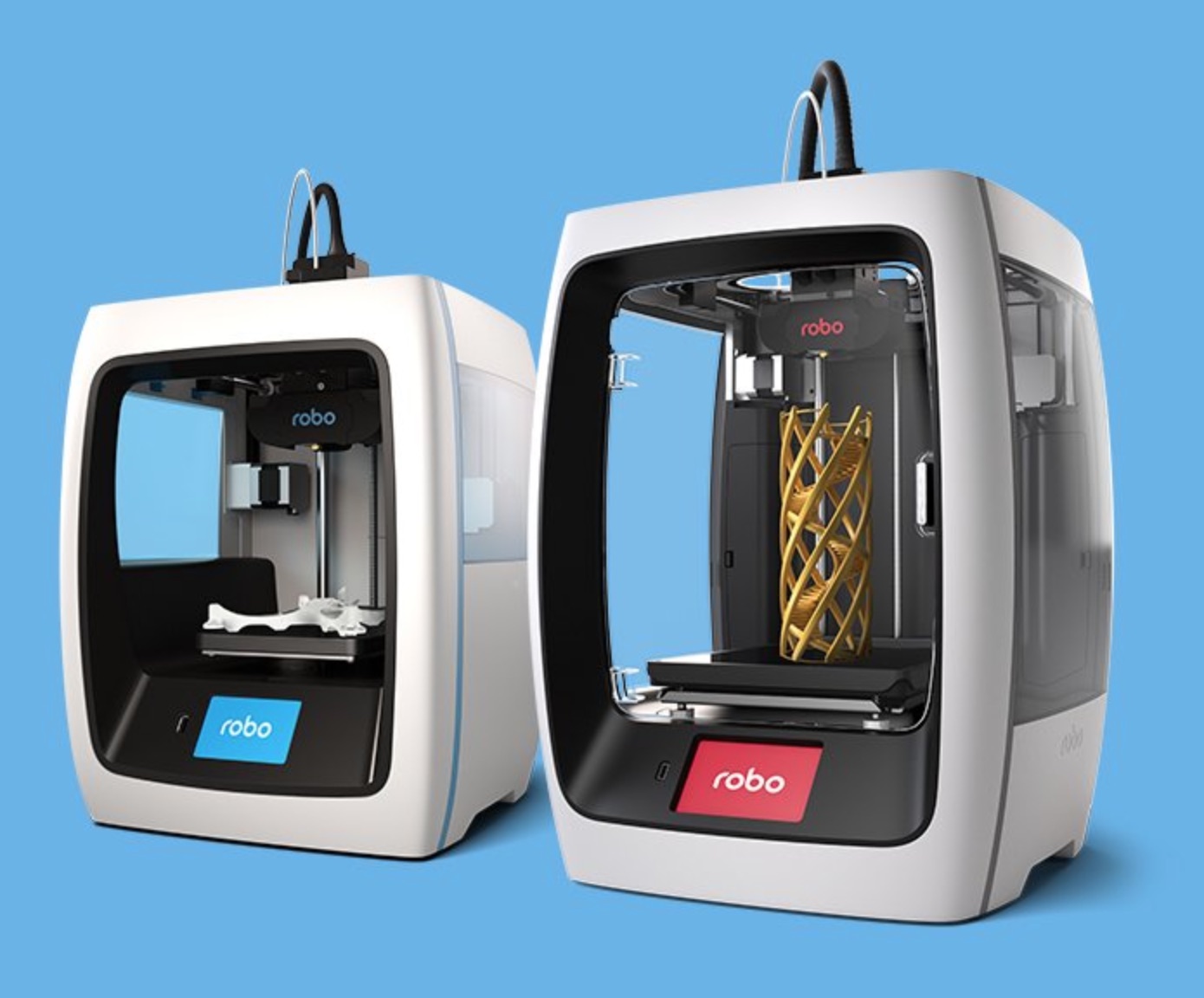
What's your backstory and how did you come up with the idea?
The idea for Robo came up pretty organically. My business partner, while in college at San Diego State University, was designing a 3D printed prosthetic leg using an industrial 3D printer for his senior mechanical engineering project.
When I saw what he was doing, and laid my eyes on 3D printing, it just made sense to me. I could see how this tool could be used in education, to bring product ideas to life, and to enhance the speed of innovation within businesses. The possibilities were endless. I knew from that moment that we needed to build our own machine.
Never spend money starting by filing your business with the state, getting a trademark, etc etc. Stop with the easy tasks that make you "official." Start the business with getting a prototype made (if it’s a product) or customers (if it’s a service).
With a small budget of about $1,500, we started building our first 3D printer.
After about six months of assembling this machine with wood and other makeshift pieces we found on eBay and from Ace Hardware, we created a home-grown video and launched our machine named the Robo R1 on Kickstarter.com.
With a goal of $49,000, we ended up raising $649,000 in 35 days! This led to the beginning of Robo. Five years later, we have put 10’s of thousands of 3D printers in the hands of students, makers, professionals, and designers across 4500+ cities and 101 countries.
Describe the process of designing, prototyping, and manufacturing the product.
Our design process has changed quite a bit over the years.
When we were building our first machine, we created over 20 different concepts with a freelance designer and simply chose the one that we all thought was the coolest. We knew the framework had to be different than what was out there because we wanted to stand out in a lineup. We accomplished that with flying colors.
As we came to our second generation of machines, we had already defined our brand and our target demographics and it was more about compiling features and a style that appealed to the specific needs of that user base. We had a lot of feedback throughout the process from prototypical customers and it drove quite a bit of the direction and feature set. Then we added more touches that were crucial into making our 3D printers simple and easy to use, which everyone would appreciate and find pleasant.
I reached out to our customers who had our product and asked them to film a quick 10 second video. That single handedly drove a majority of our business early on because people received validation from real users.
In terms of manufacturing, it was no easy task, especially when you don’t have the experience of designing, creating, and assembling a complex product from scratch. We learned as we went.
Initially, when we went overseas to begin our assembly line, we didn’t even have assembly docs on how to build the machine. It was embarrassing to say the least. Slowly, we began to see where our inefficiencies were and this led us to step up, get some help from experienced mentors, and burn the midnight oil to get together what we needed to actually produce a legit product at scale.
350+ parts in an assembly build was a phenomenal learning experience, and once we were able to take along to our two new smart 3D printers we launched last year.
The cool thing about our 3D printers is that we can use them as a tool to design and prototype new products. "It’s like a 3D printer that makes a 3D printer" as the memes would suggest. Then, once we are happy with the end result, we build the assembly docs with every individual screw and component, take them to our manufacturer or get them quoted out, and begin our first test build. This process can take 6-12 months to get moving, but every step is exciting.
Describe the process of launching the online store/business.
Being that we started on Kickstarter, we already had an initial customer base that really helped us get off the ground.
After the Kickstarter, we begun building our first website from scratch using Shopify as the ecommerce platform and purchasing a template from their store that was in line with what we needed to accomplish our business online.
I then took courses on Udemy to figure out how to build a Shopify store and learned how to do it all myself. I set up the proper apps to support some of the functionality we needed, and once it was all buttoned up, we were able to launch.
We begun using Facebook advertising early on and creating lookalike audiences based on those people who had purchased our product via kickstarter and it really allowed us to grow the business pretty quickly.
I reached out to our customers who had our product and asked them to film a quick 10 second video with their name, where they are from, and how they use our 3D printer and clipped it into a fun video. That single handedly drove a majority of our business early on because people received validation from real users.
The other thing we put an emphasis on early on was having great online support and live chat support. Being that our product was complicated and had a big learning curve, we knew it was important to be there to answer any specific questions that were necessary to make sure potential customers felt good about buying our product and going with Robo as their brand of choice.
Since launch, what has worked to attract new customers?
We have done a couple things exceptionally well early on to drive and attract new customers:
Community:
Our product is very technical and we knew people would be using it for a complicated things so we wanted to build a community where people could go and communicate with each other.
Our user community is now over 15,000 members and there was been over 110,000 discussions going on. It’s quite incredible actually. This helps someone purchasing have a place to go to interact with other users and feel like they are a part of a movement — a Robo 3D printing movement.
Facebook Ads:
We used facebook advertising quite a bit as told above. Creating conversion ads to lookalike audiences of people who actually purchased our product has been very successful - it takes the right content and the right copy to pull this off, but we tested a lot of different things and found ones that converted best and scaled them up.
Reaching out individually to every customer:
The craziest thing I have been doing is actually spending my time when I can reaching out to every customer that registers their 3D printer.
Not everyone registers, so it is manageable, but having a personal message come from the founder asking how their experience has been is really authentic, and I think 2018-2020 is going to be the years of authenticity that win.
There is too much automation now, and people need to connect, especially as we become so disconnected with social media and our phones. I am going to connect as much as I can with customers so I can have a wave of word of mouth growth as well as understand what is working and not working with our product.
How is everything going nowadays, and what are your plans for the future?
The business is going well!
We had a couple of profitable years and the last year and a half have not been profitable, but we also have built new machines and brought new technology to market, which is expensive.
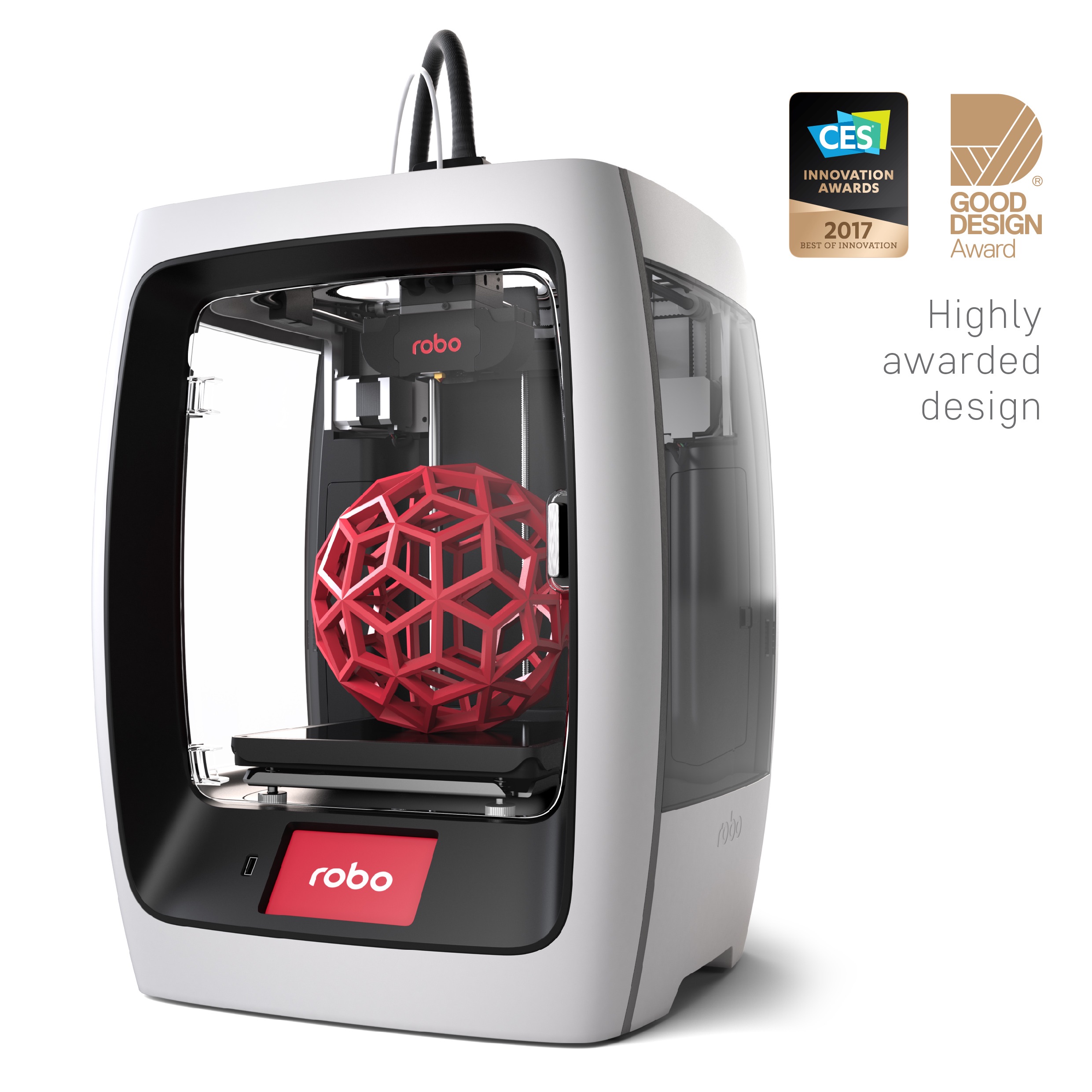
Now that we launched our new products and tech, we are scaling up the business and growing worldwide, which is exciting and I expect to have some exceptional years ahead for Robo.
We took the company public in Australia in a reverse merger last year so this has allowed us access to capital to grow the business quickly.
At the same time, we are in a tough market. The margins aren’t extremely high and Chinese competitors are coming in with "me-too" products and under-cutting cost substantially, so we are focusing on winning with our software stack, user experience, marketing, and our world class customer support. The machine, albeit it being beautiful and easy to use, is just the ticket to getting a customer into our ecosystem, which is something we recognize whole-heartedly.
Through starting the business, have you learned anything particularly helpful or advantageous?
As I always say, this business has helped from a knowledge standpoint more than anything. I have learned a ton putting myself out there and shooting for the stars.
This industry is extremely touchy and it has created an understanding within me on what it takes to be successful and I am extremely proud and grateful for that.
Here are the some of the things I did right:
Perseverance and putting yourself out there.
I had perseverance to the max and I never overthought things. Starting and growing a business is tough. So make sure you are starting with something you are passionate about, and just go.
Stop overthinking all the things you need to do. Just get something made, launch a store, get feedback as quick as possible, and worry about the details later - you don’t have to file a business license or spend a bunch of money getting a professional logo made. There is resources that will help you do all that on the cheap, which I’ll talk about later.
Launching on Kickstarter.
I launched a Kickstarter campaign at the perfect time. Kickstarter was new, and there was a ton of excitement and buzz around the platform so timing was amazing for us on launching our campaign when we did.
It really helped kick off the business and get us our first 1,000 customers, which is always the toughest goal of any business. Once you get those 1,000 customers, you nurture the hell out of them - they are your advocates that can help you take your business to the next level.
We hit a trend at the right time.
3D printing was getting a lot of hype when we launched and the market was yearning for a low cost, easy to use, plug and play 3D printer, and we delivered one of the best options available in the market at that time. Which is why we did over $1,000,000 in sales in our first real year in business.
Started focusing on the things I really liked to do.
It took a couple years for this to kick in, but once I realized the things I didn’t like to do in the business and brought on people to help with those things, I got a refresher in my energy as I could focus on the areas of the business I actually enjoyed- marketing, making content, social media, speaking about 3D printing, doing shows, and talking to customers. This is important to understand as soon as you can- put all your time and energy into your strengths within the business and hire out what you suck at. A little Gary Vee reference there.
And some of the mistakes I made:
Made a bad hire.
I hired a consultant early on who told us he would help us do a ton of things to grow the business. We decided to give him equity in exchange for all the promises he made — we even wrote a contract.
Yet it wasn’t ironclad. When he didn’t accomplish his side of the bargain, we parted ways and were served with a lawsuit, which we had to fight for a year amidst growing our business. Not fun.
I suggest that you act extremely smart in bringing on older, "more experienced" people into your business. Be careful, do your due diligence on who these people are, and write clear contracts to avoid getting yourself in a sticky legal situation.
Giving equity up front.
Never do this. Even with your founding team. Make everyone’s equity vest over a period of time or with milestones. The worst thing you can do is give away 33.33% of your business to some guy who gets a change of heart and wants to move on and then keep his equity.
Equity is precious and you should conserve it as you grow to ensure you can make decisions about raising money or bringing on powerhouse employees.
What platform/tools do you use for your business?
Shopify is our ecomm platform of choice.
My favorite tools:
- Just Uno for customized pop-up sign ups for lead gen.
- Facebook advertising for facebook and Instagram advertising for conversion purposes.
- MailChimp for email marketing- simple and easy to use, segment, and create some automations when applicable.
- Alibaba: how we sourced all our initial components for our products.
- Udemy: This is how I learned a lot of different skills early on, such as Facebook marketing, social media, Photoshop, Google Adwords, etc. It’s a great platform with high quality learning content.
- 99designs: This is where we acquired our first logo and for a $300 contest, we had 115 designs to choose from.
- Upwork: I have hired tons of freelancers to help out with some of the different things we wanted to do- video editing, programming, designing modules, editing, building out lead lists, etc. You can hire great freelancers on this platform without clogging up the office.
What have been the most influential books, podcasts, or other resources?
I like:
- MFCEO Podcast: this is just purely for motivational fire up and tidbits that get me amped for the day.
- Tim Ferriss Podcast: Unbelievable information all over this podcast.
- Gary Vee Podcast: More motivational, but I have gotten a lot of perspective from really talented people on this as well.
- How to Win Friends and Influence People: One of my favorite books of all time. We got to where we are a lot of the time from networking, meeting people, and getting connected with others, and I think if you can learn the art of becoming a person that others connect with, you will open up yourself to a lot more opportunities in life and business.
Advice for other entrepreneurs who want to get started or are just starting out?
First thing I would say is to stop overthinking everything.
Never spend money starting by filing your business with the state, getting a trademark, etc etc. Stop with the easy tasks that make you "official." Start the business with getting a prototype made (if it’s a product) or customers (if it’s a service). If you can start generating some traction, then you know you have something to build on. People tend to want to make themselves official before they put in the work to really determine if they have a tangible opportunity.
My next advice would be to always, I repeat, always, go with something you are either passionate on or have a skill in. You will have a heaping load more of an opportunity to succeed if you do. People who chase a random cool idea that just came up that could be a thing are more than likely going to fail if there is no direct relevance to something you love or are good at.
Another bit of advice is to look towards things that are popular, trending, or where technology is going. You would be surprised at how many opportunities can come up from there. For example, social media is breeding a whole new age of celebrities and "influencers" and these influencers require a number of different tasks for themselves and for the businesses that sponsor them - management, organization, negotiating, branding, and more. There is probably 10 core ideas in this realm. Just always be talking to people and keeping an eye out for where the world shifts.
Where can we go to learn more?
We are on a mission. That mission is to empower people to bring their creativity and ideas to life using 3D printing.
Check us out:

Download the report and join our email newsletter packed with business ideas and money-making opportunities, backed by real-life case studies.

Download the report and join our email newsletter packed with business ideas and money-making opportunities, backed by real-life case studies.

Download the report and join our email newsletter packed with business ideas and money-making opportunities, backed by real-life case studies.

Download the report and join our email newsletter packed with business ideas and money-making opportunities, backed by real-life case studies.

Download the report and join our email newsletter packed with business ideas and money-making opportunities, backed by real-life case studies.

Download the report and join our email newsletter packed with business ideas and money-making opportunities, backed by real-life case studies.

Download the report and join our email newsletter packed with business ideas and money-making opportunities, backed by real-life case studies.

Download the report and join our email newsletter packed with business ideas and money-making opportunities, backed by real-life case studies.



